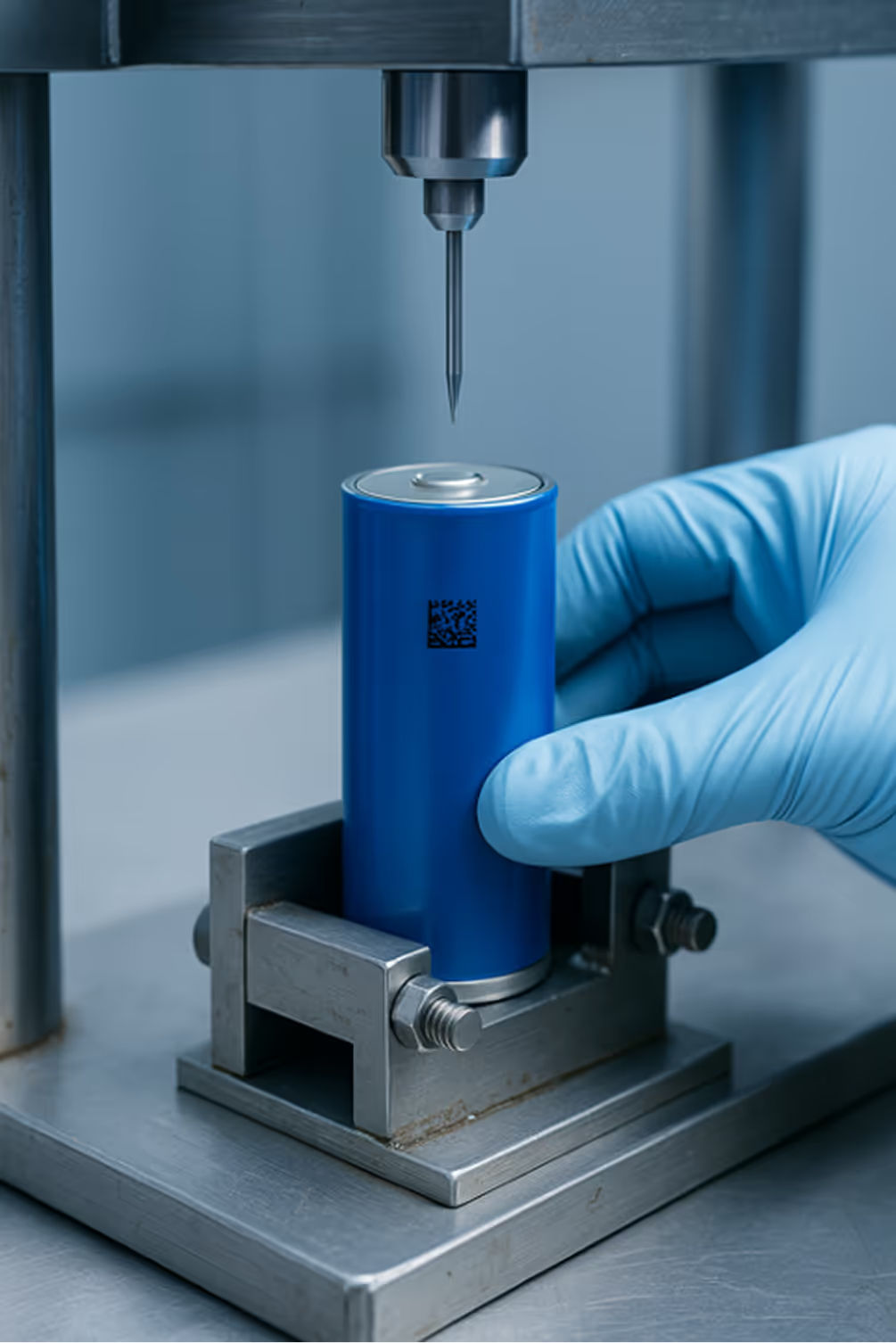Validation
Validation is the systematic process of confirming that a product, system, or component meets specified requirements and is fit for its intended use, particularly critical in ensuring battery safety, performance, and regulatory compliance.
Validation is the systematic process of confirming that a product, system, or component meets specified requirements and is fit for its intended use. In the fast-evolving battery industry, where innovations in electric vehicles (EVs), energy storage, and portable electronics demand uncompromising reliability, validation serves as a cornerstone for mitigating risks, enhancing product longevity, and building trust among stakeholders. As battery technologies advance, professionals face increasing complexity in materials, designs, and applications, making robust validation protocols essential to prevent failures, ensure user safety, and comply with stringent international standards. This article delves into the intricacies of validation tailored for battery experts, offering practical insights and advanced perspectives to navigate this critical domain effectively.
Fundamentals of Validation in Battery Systems
At its core, validation in the battery sector involves a rigorous, evidence-based approach to verify that battery cells, modules, packs, and associated systems—such as Battery Management Systems (BMS)—perform as intended under real-world conditions. Unlike simple verification, which checks if specifications are met, validation assesses whether the battery functions correctly in its operational environment, accounting for variables like temperature extremes, charge-discharge cycles, and mechanical stresses. This distinction is vital for professionals, as it directly impacts safety margins, lifecycle costs, and market acceptance. By embedding validation early in the development cycle, companies can identify potential flaws, reduce recalls, and accelerate time-to-market while upholding quality benchmarks.
Definition and Scope in Battery Context
In battery technology, validation encompasses a broad scope, including electrical, thermal, mechanical, and chemical assessments to ensure holistic performance. For instance, it involves testing for capacity retention under varied loads, evaluating thermal runaway prevention mechanisms, and validating BMS algorithms that monitor state-of-charge and health. This comprehensive approach helps manufacturers and suppliers address unique challenges, such as the trade-offs between energy density and safety in lithium-ion batteries. By defining clear validation criteria—aligned with industry standards like IEC 62133 or UN 38.3—teams can establish reproducible processes that support innovation without compromising on reliability.
Why Validation Matters for Industry Professionals
For battery professionals, validation is not merely a regulatory hurdle but a strategic imperative that drives competitive advantage. In an era where battery failures can lead to costly recalls, reputational damage, or even safety incidents, a well-executed validation framework minimizes uncertainties and fosters innovation. It enables OEMs and component suppliers to demonstrate product robustness to customers and regulators, thereby facilitating smoother certifications and market entry. Moreover, as batteries power critical applications from EVs to grid storage, validation ensures that performance metrics—such as cycle life and efficiency—align with user expectations, ultimately enhancing brand credibility and customer satisfaction.
Core Validation Processes and Methodologies
Effective validation in the battery industry relies on structured methodologies that integrate testing, analysis, and documentation. These processes typically begin with requirement analysis, where functional and safety needs are defined based on application specifics—be it for automotive, industrial, or consumer use. Subsequently, validation plans are drafted, outlining test protocols, acceptance criteria, and risk assessments. This phase often involves collaboration across engineering, quality assurance, and regulatory teams to ensure alignment with standards like ISO 26262 for functional safety in automotive contexts. By adopting a phased approach—from component-level validation to system-level integration—professionals can systematically address potential failure modes and optimize resource allocation.
Testing and Evaluation Techniques
Testing forms the backbone of battery validation, employing a mix of laboratory experiments, simulation models, and field trials to assess performance under controlled and real-world scenarios. Key tests include electrical characterization (e.g., capacity fade analysis, impedance spectroscopy), thermal cycling to evaluate stability across temperature ranges, and abuse testing—such as nail penetration or overcharge—to simulate extreme conditions. Advanced techniques, like accelerated life testing and finite element analysis, help predict long-term behavior and identify wear-out mechanisms early. For BMS validation, focus areas include algorithm accuracy, fault detection, and communication protocols, ensuring seamless integration with battery packs and vehicle systems. These evaluations not only validate design assumptions but also provide data-driven insights for iterative improvements.
Documentation and Compliance Management
Beyond testing, thorough documentation is crucial for validation, as it provides traceability and evidence for regulatory submissions and internal audits. This includes detailed test reports, risk assessments, and compliance matrices that map validation outcomes to standards such as UL 2580 or GB/T for regional markets. Professionals must maintain records of all validation activities, from initial design reviews to post-production monitoring, to demonstrate due diligence and facilitate recalls if needed. In practice, leveraging digital tools for data management can streamline this process, reducing errors and ensuring consistency across global operations. By prioritizing documentation, companies not only meet compliance demands but also build a knowledge base for future projects, enhancing organizational learning and efficiency.
Industry Standards and Regulatory Landscape
The battery industry operates within a complex web of international standards and regulations, which validation processes must adhere to for market access and safety assurance. Key standards include IEC 62619 for industrial batteries, which covers safety requirements, and SAE J2929 for electric vehicle battery systems, focusing on performance and durability. Regional variations, such as the European Union's Battery Directive or China's compulsory certification, add layers of complexity, requiring tailored validation strategies. Professionals must stay updated on evolving norms, as amendments often introduce new testing criteria—for instance, enhanced thermal management protocols or recyclability assessments. Navigating this landscape demands a proactive approach, where validation is not a one-time event but an ongoing activity aligned with regulatory updates and technological shifts.
Key Standards Overview and Implications
Understanding specific standards is essential for effective validation; for example, UN 38.3 mandates tests for transportation safety, including altitude simulation and vibration, while ISO 12405 outlines procedures for performance testing of lithium-ion traction batteries. These standards influence validation scope by defining test conditions, pass/fail criteria, and reporting formats. Implications for professionals include the need for specialized equipment, trained personnel, and cross-functional collaboration to interpret requirements accurately. By integrating standard-compliant validation into product development, companies can avoid non-compliance penalties, reduce time-to-certification, and enhance interoperability in supply chains, ultimately supporting global market expansion.
Challenges and Advanced Solutions in Battery Validation
Despite its importance, validation in the battery sector faces several challenges, such as the high cost of testing equipment, rapidly changing technology landscapes, and the need for multi-disciplinary expertise. For instance, validating next-generation solid-state batteries involves novel materials and failure modes that lack established protocols, requiring adaptive validation frameworks. Additionally, scalability issues arise when moving from lab-scale prototypes to mass production, where batch-to-batch variations must be controlled. Professionals can overcome these hurdles by adopting risk-based validation approaches, leveraging data analytics for predictive modeling, and investing in automation to increase throughput and repeatability. Collaboration with research institutions and industry consortia also provides access to shared knowledge and best practices.
Common Pitfalls and How to Avoid Them
Common pitfalls in battery validation include underestimating environmental factors, such as humidity effects on battery chemistry, or over-relying on simulations without empirical validation. To avoid these, professionals should conduct comprehensive failure mode and effects analysis (FMEA) early in the design phase, incorporate real-world usage profiles into test plans, and validate across diverse conditions—including worst-case scenarios. Another pitfall is inadequate documentation, which can lead to audit failures; implementing standardized templates and digital platforms ensures consistency. By learning from industry case studies—like recalls due to insufficient thermal validation—teams can preempt issues and refine their processes for greater resilience.
Best Practices for Sustainable Validation
Adopting best practices in validation not only enhances reliability but also supports sustainability goals in the battery industry. This includes designing validation protocols that assess environmental impact, such as recyclability and energy efficiency, alongside performance metrics. Practices like using accelerated testing to reduce resource consumption, implementing circular economy principles in test setups, and validating for second-life applications extend battery lifespans and reduce waste. Furthermore, fostering a culture of continuous improvement—through regular audits and feedback loops—ensures that validation evolves with technological advancements. For professionals, these practices translate into cost savings, regulatory alignment, and a stronger market position driven by ethical and efficient operations.
Conclusion and the Role of Expert Partners
In summary, validation is an indispensable element of battery technology development, ensuring that products meet safety, performance, and regulatory demands in a dynamic industry. By embracing structured processes, adhering to standards, and addressing challenges proactively, professionals can drive innovation while minimizing risks. As batteries continue to power the transition to sustainable energy, the need for robust validation will only grow, requiring specialized expertise and collaborative efforts.
In this context, PEM Motion stands out as a trusted international engineering and consulting partner for battery technology, offering comprehensive support to battery manufacturers, component suppliers, OEMs, and EV producers. With key expertise in Battery Testing & Compliance, BMS Solutions, Training, and Operations Support, PEM Motion helps clients navigate complex validation requirements—from designing tailored testing procedures and managing documentation to ensuring compliance with international standards like IEC and UN regulations. By leveraging PEM Motion's insights, companies can streamline their validation workflows, reduce time-to-market, and achieve higher levels of safety and performance, ultimately advancing the global battery ecosystem.
Our Focus
What we do

BATTERY Compliance
We ensure your batteries meet all compliance standards for safety and performance.

OPERATIONS & TRAINING
We empower your team with comprehensive training and operational consultation for battery technology and energy storage solutions.

BMS SOLUTIONS
We offer a wide range of Li-Ion battery solutions and Battery Management Systems for various industries.












